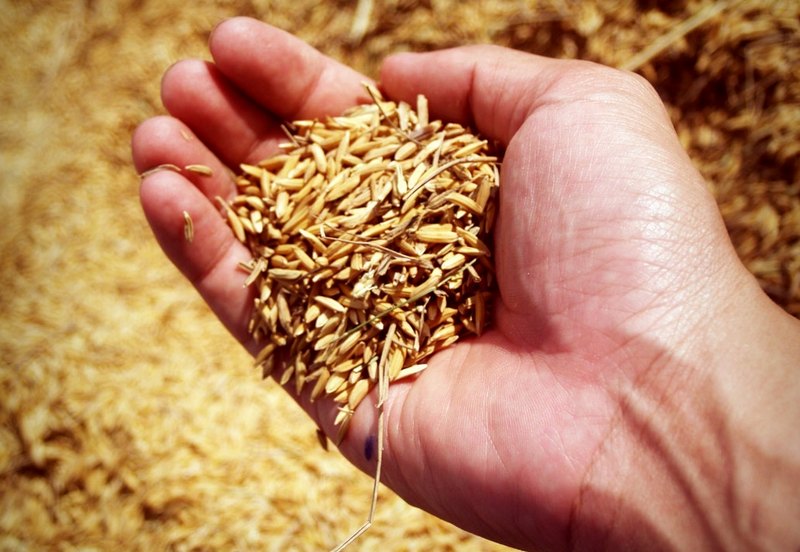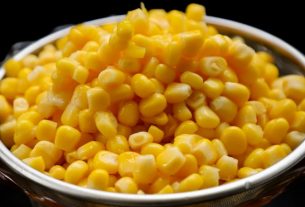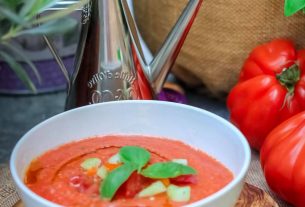Grains of polished rice are amazingly clean and pearly white. This kind of rice is good for various recipe and the best for making sake.
Though this type of rice became common nowadays, it is not really recommended for consumption than regular rice because it has lesser nutritive value. This happened because it has been polished by machines thereby taking off most of the outermost layer of the rice grain that holds much of the nutrients of rice.
If you love eating polished or white rice and want to know if you can polish your own rice at home, then the answer is yes. You can polish your own rice, but it can be a really tedious job and the result will not be as polished when they have gone through the rice polishing machine. Nonetheless, here is a complete information about polished rice, how to polish rice, and other helpful facts.
A Guide to Polished Rice
We are most likely aware of the types of rice which are the brown rice and white rice, and the rice which we call white has undergone the polishing process. The polishing of rice makes it lost some of its nutritive value. It is also why many would choose brown rice over white rice but remember that white or polished rice is still healthy to eat.
The Differences in Brown Rice and Polished Rice
Be it white or brown, these kinds of rice are considered one of the staple foods in many countries. These kinds of rice also have different characteristics that makes them unique and fit their purpose.
The grains of brown rice are usually coarser than the white rice due to its natural coating. When rice is simply removed from its husk, the rice coating made of germ and bran still remain, and this gives rice its brownish color and high nutrition value which includes protein, niacin, and other minerals. It also takes quite some time to cook it than white rice and tougher to chew.
The kernels or grains of polished or white rice are smooth. When rice is milled to be polished, the outermost coating made of germ and bran are removed making it smooth and whiter, but also become less nutritious. As the bran and germ are stripped off, so are some of its niacin, protein, and other minerals. It is quicker to cook and the cooked rice is chewy soft. These characteristic makes white or polished rice desirable.
Uses for Polished Rice
Rice can be made or mix with other recipes because it is very flexible due to its bland taste yet chewy texture. It is also available almost everywhere at a cheaper cost.
Here are just some of the common recipes that you can make with polished or white rice.
- Steamed rice
- Sticky rice
- Sake
- Spanish rice with beans
- Stir fry
- Fried rice
- Rice milk
- Zongzi
- Burrito compilation
- Side dish
- Mexican bowl
- Casserole
Cooking Polished Rice
To be able to eat rice, make rice into another dish or add it to your recipe, you need to cook it first. The normal and easiest way to cook polished or white rice is by steaming.
Follow these easy steps to cook polished rice.
- Prepare your desired cups of rice, water, and a cooking pot with cover. You may also opt to prepare salt and butter.
- For a cup of rice, you will need two cups of water.
- Boil the water in the pot and add a teaspoon of butter and a pinch of salt if you like but rice will cook well even without it.
- Add rice to the boiling water and stir for a moment.
- Set cooking temperature to medium heat or lower and cover the pot.
- Monitor the rice while it gets cooked and if it has become too steamy, lower the heat temperature.
- Leave the pot covered for around 15 to 20 minutes for the rice to cook well.
- Check cooked rice by sticking in a fork in the middle of the pot. If it felt soft and not grainy, and has no excess water on top, then it is well-cooked.
Nutritional Overview of Rice
One of the greatest sources of energy is rice because it has high protein, carbohydrates and minerals needed by the body. Rice is not only a good source of energy but also promotes the health of our nervous system, natural anti-inflammatory, and aids the digestive system.
Though others say that polished or white rice has lower nutritional value, the fact remains that still is packed with nutrients that are good for our body. It is rich in folate, magnesium, potassium, folic acid, and fiber. It has very low sodium content and can also aid in weight loss.
Eating rice can make you feel full easily than other types of grains in just a little serving. Its bland taste and chewy soft texture makes it suitable to be combined with any other dishes too. You can even make your own recipe with cooked rice.
Commercially, rice is available at a lower price compared to other grains, so it is budget friendly.

Polishing Rice – The Process
Since rice is available in almost every grocery store or supermarket, it is easier to buy it. If you want to buy white rice, remember that it is polished rice and not naturally white and has lesser nutritive value than brown rice.
Polishing rice to become white is done easier and faster with polishing machines but if you want to do it at home manually, it can take a few days and the result will not be exactly like the white rice polished by machines. Also, rice are polished differently depending on its purpose, for example, the rice used to make sake is polished to a ratio of 50 to 70 percent while the rice sold for consumption is mostly polished to a ratio of 90 percent. The ratio tells us how much of the rice grain remained after the outer layer has been polished off.
How to Polish Rice
In case you want to polish rice at home, you need to buy a polisher machine for rice. This machine will make polishing rice easier and faster for you. However, you can still polish rice even without the machine and it is not as hard as you thought.
Here is a walk-through on polishing rice.
- Rinse the rice thoroughly in a colander. Stir the rice while rinsing and do it two to three times.
- Knead the rice with your bare hands to soften the bran or the rice coating.
- While rinsing the rice in the colander, you can use your knuckles to knead it by pressing down on the rice. Squeeze and move the rice in circular motion.
- When using a colander made of stainless steel, you can do the bruising method by pressing rice to its edges. Put just enough pressure to bruise the rice but do not overdo it.
- After kneading or bruising, rinse out the removed bran two times.
- Check the texture of the rice by rubbing some on your fingers. It will feel coarse because of the bruising process. If it feels smooth, then you need to repeat the kneading, bruising, and rinsing processes.
These rice polishing steps will only take about ten minutes. The bruising, kneading, and rinsing processes are effective ways of polishing rice at home.
Keep in mind that the manual way of polishing rice will not give you the exact or same result when using a rice polisher machine, but it still is a good way to polish your rice at home.
Related Questions
Most rice lovers are enticed to buy white or polished rice that is why we shared information on polished rice and the polishing process, and we hope this has been helpful.
Here are some more information that might also be important for you to know.
What does a rice polishing machine do?
This machine is typically used to polished rice by removing the outer coating of the rice which is called bran. Once the bran is removed, the rice becomes whiter.
How can I tell if rice is polished?
Rice naturally has brownish outer layer so if you purchased white rice it is basically already polished thus it became white rice.
Is eating white rice daily good for me?
Even if white rice has been processed to make it whiter, it is not bad for your health. It still has the nutrition our bodies need daily. It may not be as healthy as eating brown rice, but it is not unhealthy. It is also the cheapest and quickest source of energy.
Some white rice are also enriched with more vitamins and minerals that make it as healthy as brown rice or even healthier than brown rice.



I got the Polish machine,that is why I want to know the process and how to use it to polish my rice,can you please breat it down for me